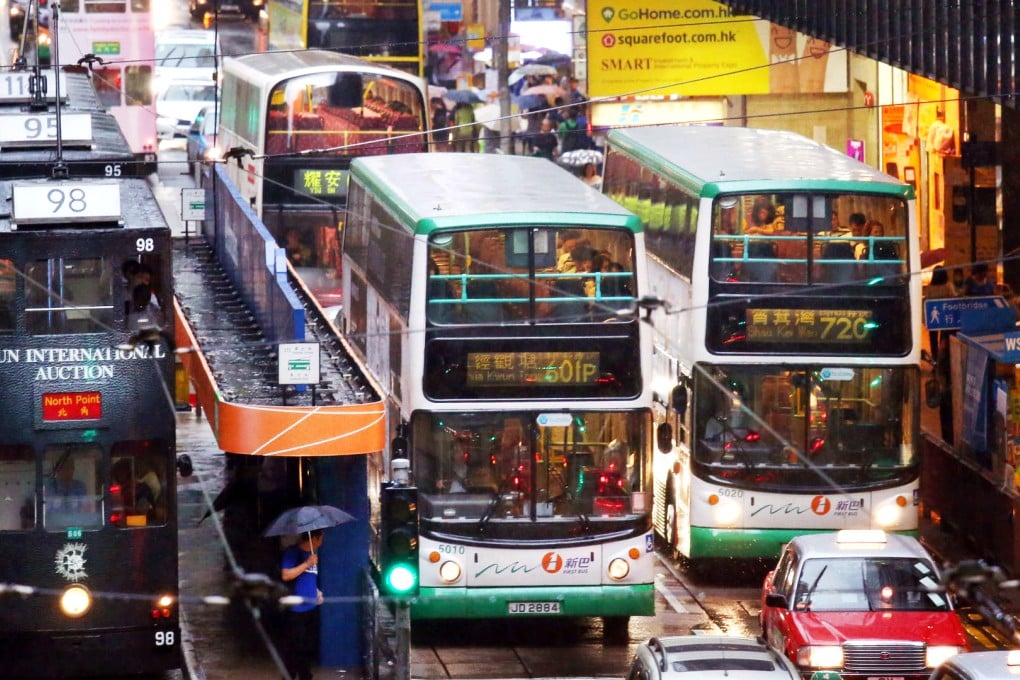Pollution levels in Central are double WHO safety standard, study reveals
Friends of the Earth calls for public transport to get priority as particle count soars in rush hour

Levels of tiny particles polluting the air in Hong Kong's Central business district are 104 per cent higher than the World Health Organisation safety standard during evening rush hour, according to a new study that links traffic jams with higher pollution.
While the amount of the pollutant PM2.5 emitted by private vehicles is relatively lower than by buses, it accounts for more than 40 per cent of all particulates from vehicles on Des Voeux Road Central during the busiest periods. Private cars clogging up traffic in turn caused higher levels of PM2.5 to be emitted from buses, the study found.
Using PM2.5 readings taken from monitoring devices fitted onto trams, the year-long data shows readings of PM2.5 reaching 51ug/m3 from 7pm to 8pm - which is more than twice the limit set by the WHO at 25ug/m3.
Watch: Friends of the Earth video about Hong Kong's air pollution
"Even though the data is collected on trams, the air quality affects everyone in that area; not just tram-riders, but also those on the streets and especially those working there," said environmental affairs officer Adrien Chan Kam-cheuk from Friends of the Earth, which conducted the study.